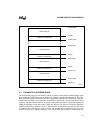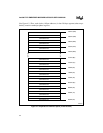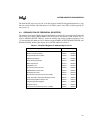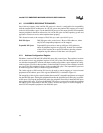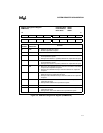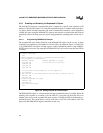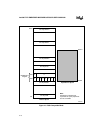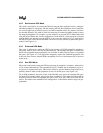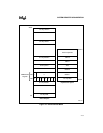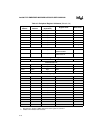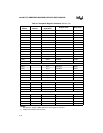
4-11
SYSTEM REGISTER ORGANIZATION
4.6.2 Nonintrusive DOS Mode
This mode is achieved by first setting the ESE bit (using the three sequential writes), setting the
individual peripherals’ remap bits, and then clearing the ESE bit. Peripherals whose remap bits
are set are mapped out of DOS I/O space. Like DOS-compatible mode, only address lines A9:0
are decoded internally. This mode is useful for connecting an external peripheral instead of using
the integrated peripheral. For example, a system might use an external 8237A DMA rather than
using the internal DMA unit. For this configuration, set the ESE bit, set the remap bit associated
with the DMA unit and then clear the ESE bit. In this case, the external 8237A is accessible in
the DOS I/O space, while the internal DMA can be accessed only after the expanded I/O space is
enabled. (See Figure 4-6.)
4.6.3 Enhanced DOS Mode
This mode is achieved by setting the ESE bit and clearing all PC/AT-compatible peripherals’
remap bits. Address lines A15:0 are decoded internally. The expanded I/O space is enabled and
the PC/AT-compatible internal peripherals are accessible in either DOS I/O space or expanded
I/O space. (See Figure 4-7.) If an application frequently requires the additional peripherals, but
at the same time wants to maintain DOS compatibility for ease of development, this is the most
useful mode.
4.6.4 Non-DOS Mode
This mode is achieved by setting the ESE bit and setting all peripherals’ remap bits. Address lines
A15:0 are decoded internally. The expanded I/O space is enabled and all peripherals can be ac-
cessed only in expanded I/O space. This mode is useful for systems that don’t require DOS com-
patibility and have other custom peripherals in slot 0 of the I/O space. (See Figure 4-8.)
For all DOS peripherals, the lower 10 bits in the DOS I/O space and in the expanded I/O space
are identical (except the UARTs, whose lower 8 bits are identical). This makes correlation of their
respective offsets in DOS and expanded I/O spaces easier. Also, the UARTs have fixed I/O ad-
dresses. This differs from standard PC/AT configurations, in which these address ranges are pro-
grammable.



